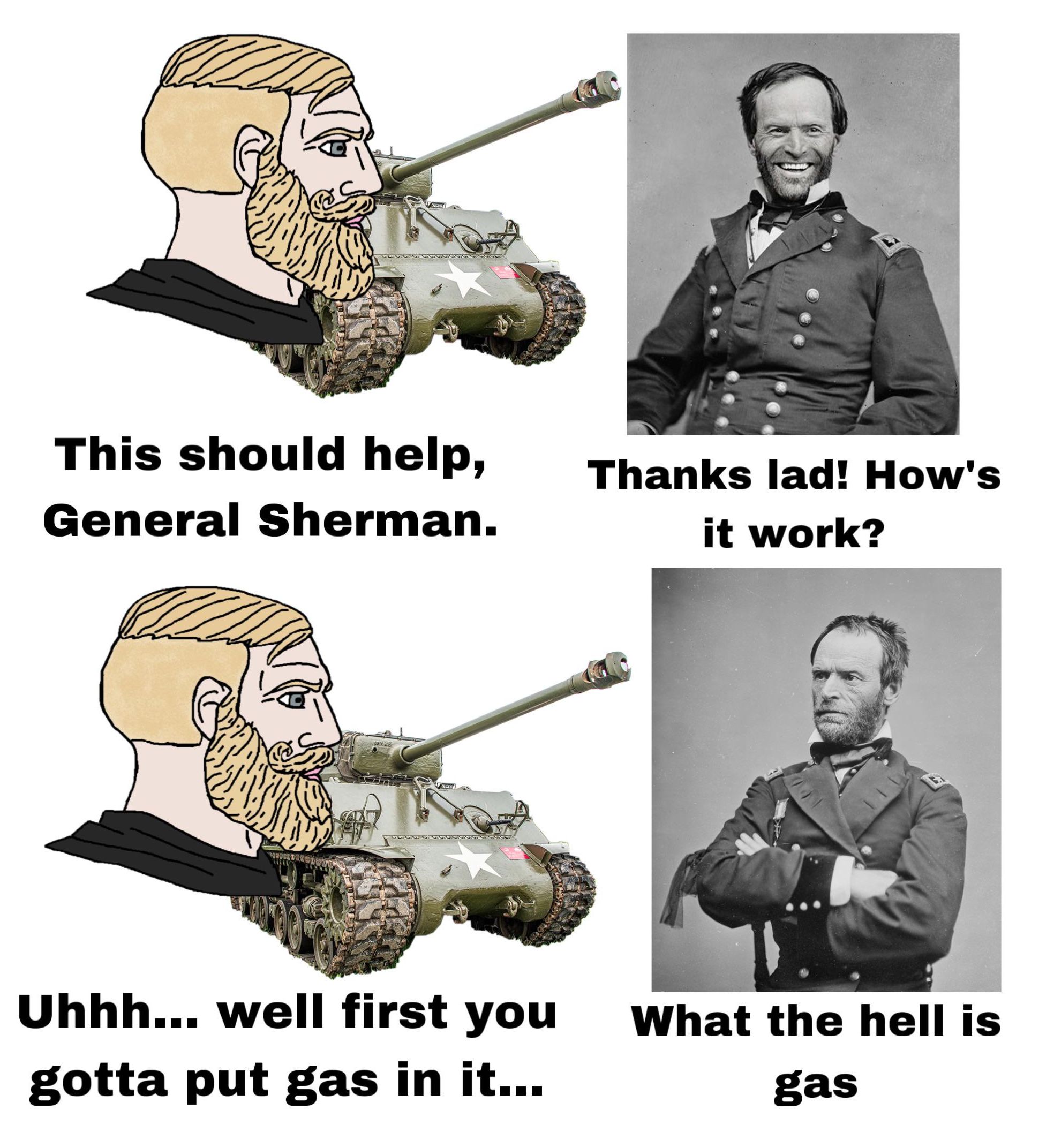this post was submitted on 17 Nov 2024
193 points (99.0% liked)
Fire Memes for Traitor Haters
455 readers
26 users here now
Where we meme (joking in tone and detail, serious in sentiment) about General Sherman, the Civil War, and how the secesh traitors had it coming.
RULES
-
No bigotry. The Union, or at least the part of the Union WE support, fought AGAINST that shite. We are anti-racist, anti-sexist, anti-homophobic, anti-transphobic, and in general anti-bigot here, even if not all the lads in Union blue uniforms were.
-
No Confederate sympathizing. Anti-democratic racist slaver traitors don't deserve shit.
-
Follow all Lemmy.world rules
founded 9 months ago
MODERATORS
you are viewing a single comment's thread
view the rest of the comments
view the rest of the comments

I know they had a lot of trouble with precision. It was 20 years ago that I was into hotrods, engines, painting, and stuff. I wanted to better understand what additives were doing to fuel, was exploring custom forced induction setups, and wrapping my head around more complex carburetors, mechanical fuel injection (like hilborn), and working my way up to a custom megasquirt EFI setup.
I had a few books on the cracking process but only understood probably 10%. IIRC it basically amounts to holding the various components of the crude at a very specific temperature and pressure to isolate specific groups of products. The products depend largely on the staging of the process. The extraction of one product group must happen completely before the next, and so on down the line until you're left with the rest. Each stage has very little tolerance for variations in temperature and pressure.
Naturally, precision temperature and pressure control is very hard to achieve in an age before electronics. I know this was a major reason why very early engines from the 1930's are all very low compression. They had to be low compression because available fuel quality was very low octane.
I don't think most people know this, but octane is just the level of precision of isolation in a cracking stage. Like with a 93 octane it is just a smaller window of products that are allowed to escape than with an 87 octane fuel. The bigger window gives a bigger yield and faster. This range of products that can evaporate at a wider range of temp/pressure just have less consistent flame front characteristics and other behaviors. Lower octanes are more volatile, prone to preignition, and have more unburned exhaust products.
The main reason why the supercharged 1930's style hotrods with a big roots blower were a thing was because the early motors had such a low compression ratio that just slapping on the old superchargers from retired and junked buses only required an intake manifold and welding a pulley. People started doing it a lot around Los Angeles, then went south to race around the empty streets of the orange and avocado groves of Orange Country. This ended up getting sanctioned into a safer place with the first ever drag strip–Lions, which was run by Mickey Thompson. Lions is now long gone and under one of the runway expansions of the John Wayne airport in OC.
Anyways, I'm pretty sure you would find that the kerosene of the 19th century was more like everything from diesel through jet fuel all tossed in a bucket and the rest was probably tar.
I am probably wrong. I don't have a clue about how precision temperature controls worked back then. I know Watts was behind several over pressure controls devices that made steam boilers reasonably safe–so long as they had enough water. So, I picture pressure was less of an issue, but how one isolates precision temperature in that age is beyond me.